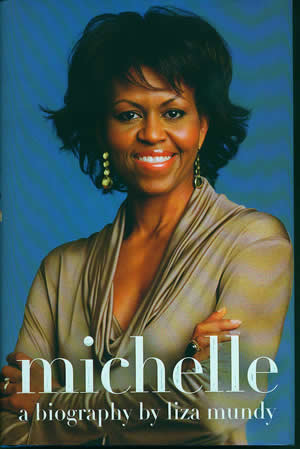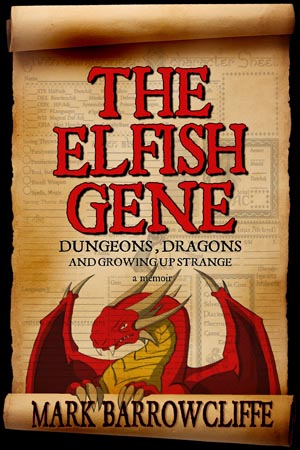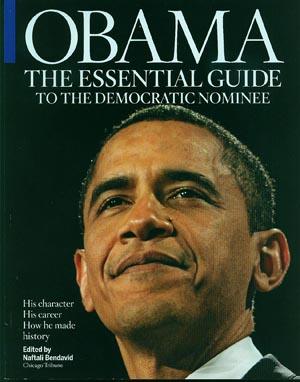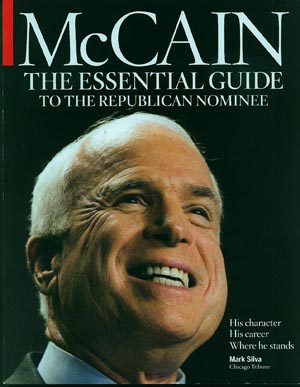Green Christmas by Jennifer Basye Sander and Peter Sander
Book Review: 'Green Christmas'
November 26, 2008 —
Picture this: it’s December 30th, and there are four garbage bags at your curb, all filled with what were once rolls and rolls of colorful, decorated paper.
Several cardboard boxes sit next to the bags. Peek inside them, and you’d see tattered cellophane, plastic wrappers, and crumbly foam packaging.
Leaning against everything, shedding its needles, hiding an errant ornament and wisps of wrinkled tinsel, is a sad-looking pine.
Wasteful? You bet. According to authors Jennifer Basye Sander and Peter Sander (with Anne Basye), our trash output rises by 25 percent between Thanksgiving and New Year’s Day. In the new book “Green Christmas”, they’ll give you ideas you can use to cut the waste and have an eco-friendly holiday season.
Cut back at Christmas? Bah, humbug, right? Not so, say the authors. Even if you back off buying, wrapping, and decorating just a little bit, it adds up. Change doesn’t mean loss of traditions; it means new traditions for your family.
Take, for instance, the feast. Leftovers are great – if they’re eaten. The authors say that “if every American threw away just one uneaten tablespoon of mashed potatoes [each year], that would add 16 million pounds of waste to our landfills.” Their advice: buy locally-grown produce, don’t over-prepare food, and donate extra to the local food pantry or shelter.
You may think an artificial Christmas tree is “greener”, but the authors prove that’s not true. Instead, consider a live tree you can plant in your yard when it gets warmer, or skip a tree altogether and decorate with leftover branches from a tree lot. If your family insists on a “real” tree, recycle it after the holidays. And if you’re tired of the same old ornaments, consider an ornament swap with like-minded friends.
So how do you tame the Gimmes and go green with gifts? Be creative, the authors say. Give the gift of time. Make presents, or give gift certificates to a local resale store (where there are all sorts of gently used treasures). Donate something meaningful in the recipient’s name. Be clever with your wrapping or give something that doesn’t have to be wrapped at all.
Reading “Green Christmas” is a little like eating holiday fruitcake: some parts are delicious and in good taste. Other parts will make you wrinkle your nose.
Yes, authors Jennifer Basye Sander, Peter Sander, and Anne Basye have some obviously valid, valuable ideas but they also contradict themselves (Shop at locally-owned stores, they say. Later, they trumpet online shopping), and some of the ideas are downright odd (Take the kids on a fun-filled, magical Christmas trip to the town dump so they can see how much stuff is wasted). There’s an abundance of ideas on greening Christmas, but few tips for getting the family on-board, an omission that may make implementing the hints difficult at best.
If you’re adamant about a completely, totally green lifestyle and can risk being called a “Grinch”, then pick up “Green Christmas”. If you love the holidays just as they are, though, don’t waste your money.
“Green Christmas” by Jennifer Basye Sander and Peter Sander, with Anne Basye c.2008, Adams Media $7.95 / $8.75 Canada - 192 pages, includes index
![]() Submit a comment on "Book Review: 'Green Christmas'"
Submit a comment on "Book Review: 'Green Christmas'"
Book Review: 'Michelle: A Biography'
November 17, 2008 —
They say that behind every great man is a woman who’s willing to give him a goose in the posterior when he needs it most.
Marc Antony had his Cleopatra. Henry VIII had his Catherine, Kathryn, Katherine, two Annes and a Jane. Harry would have been lost without Bess. Martin had his Coretta.
And Barack has Michelle.
By now, we know a lot about our future leader, but what do we know about the woman behind the office? You’ll find out when you read “Michelle” by Liza Mundy. (c.2008, Simon & Schuster $25.00 / $28.99 217 pages, includes notes)
To truly know Michelle Robinson Obama, says Mundy, you need to understand where she came from. Born in a then-segregated area on the South Side of Chicago in 1964, Michelle Robinson was the second child of parents who raised her to be independent and strong-minded.
As a teen, Michelle Robinson attended a magnet school with other high-achievers, including the daughter of Jesse Jackson, Sr. Because the Robinsons encouraged their children to get the best education, Michelle chose Princeton, then went to Harvard and set her sights on becoming a lawyer.
Michelle’s family claims that she was always hard on her suitors. When she brought Barack Obama home for the first time, her brother Craig said, “I was thinking, ‘Nice guy. Too bad he won’t last.’” But last Obama did. They were married in 1992.
Friends and former colleagues say that it was obvious that Obama was meant for a political career; in fact, he told several people that he aspired to high office. His new wife was an asset to that ideal because she introduced him to people who would further his career, politically. Conversely, he helped her find jobs that made a difference in their neighborhood.
So what can we look forward to when the new Presidential family moves into the White House? Mundy says that Michelle Obama has vowed to help families. She loves children and has always strived to make her life meaningful. Breaking down self-segregation is important to her, as is bringing people together.
Reading “Michelle” is a mixed bag. There’s an awful lot in here that you already know, and a lot you probably won’t care about.
Author Liza Mundy admits that she wrote this book without the help of Obama’s political team (who discouraged close friends from talking), and without access to Michelle Obama. She eventually found a few people who would talk, but based on her vast notes, much of this book was put together from magazines, newspapers, and other articles written on the future First Lady.
On the other hand, there are enough “AHA!” nuggets in this book to keep your interest and to keep you turning pages. The interviews seem fresh. Some of the stories weren’t overly familiar. And this book seems to dig a little deeper than you’d get in a fluff-piece magazine article.
If you’ve followed politics for the last twelve months but need to know more about the President-elect’s family, this is a decent place to start. “Michelle” is a good book to get behind.
![]() Submit a comment on "Book Review: 'Michelle: A Biography'"
Submit a comment on "Book Review: 'Michelle: A Biography'"
Book review: 'The Elfish Gene'
November 3, 2008 —
They are the three words that cause panic and excitement. Three words that drive young humans to amazing depths of desperation. Words that strike fear in the hearts of parents, causing them stand in long lines during the holidays: “Collect Them All”.
Scientists say that the urge to collect is biological. Our ancient ancestors did it to feed their brood, but since we no longer forage, we collect for fun.
And some of us take it to the extreme. In the new book “The Elfish Gene” by Mark Barrowcliffe, you’ll read about one man’s adolescent addiction and the way it shaped his entire life (c.2008, Soho Press, $25.00 / $27.50 Canada, 288 pages).
As a very young man, Mark Barrowcliffe often fancied himself as intelligent, and a bit of a sardonic rake. The reality, he now admits, was that the things he said were annoying and often made people roll their eyes and scurry away.
Usually, that “something said” was about dragons or wizards.
By age eleven, Barrowcliffe had fallen in love with the role-playing fantasy game, Dungeons & Dragons. At first, he played with older, fourth-year students at his school in Coventry, England, but the fourth-year boys thought Barrowcliffe’s theatrics were a bit too much. The fourth-years brutally barred him from playing.
\Undaunted, Barrowcliffe found a larger group of D&D players, this one run by a gaming adult and populated with boys from another social class. There, realism in the fantasy games was of the utmost importance; Barrowcliffe says that, instead of a game that lasted an afternoon, the group could spend hours looking for an imaginary rivet for make-believe armor. Still, it was in this group that Barrowcliffe felt most accepted.
From age eleven to age sixteen, Barrowcliffe was obsessed with dungeons, dragons, wizards, and orcs. His every conversation - even those he had with his patiently loving “nan” - led back to his fantasy world.
But somewhere toward the end of his adolescence, D&D didn’t seem like so much fun any more. Girls were more appealing, and spending time in the disco was more fun than time in a room with gassy adolescent boys and miniature wizard figures. On the night he left his beloved gamebook in the living room of a prankster, Barrowcliffe knew he’d left his fantasy world behind.
Or did he?
Part of me liked this book. Author Mark Barrowcliffe can be scathingly funny at times, and his descriptive memories will cast a spell on your funnybone. On the other hand, he admits he must’ve bored many people to tears with his incessant dragon talk, and in that, he hasn’t changed much. Perhaps his on-and-on-and-on about the game, his fellow players, and their characters was meant to illustrate his earlier obsession, but it made me want to breathe fire on this book for good.
If you were (or are) heavily immersed in fantasy gaming, “The Elfish Gene” will make a lot of sense to you, and you’ll enjoy completely. If you don’t understand those kinds of role-playing games, though, be dragon yourself away to find another book.
![]() Submit a comment on "Book review: 'The Elfish Gene'"
Submit a comment on "Book review: 'The Elfish Gene'"
Book reviews: McCain and Obama, the essential guides
November 3, 2008 —
Got change?
If you’re undecided this November, you’ll need it. Heads, you vote for this duo. Tails, you vote for that one. Both candidates have talked about “change” at one point or another, and you’re glad you’ve got a pocketful of it.
So what does a thinking adult do in an election year like this one? First, you find a copy each of “McCain: The Essential Guide to the Republican Nominee” by Mark Silva and “Obama: The Essential Guide to the Democratic Nominee” by Naftali Bendavid (c.2008, Triumph Books, $14.95 each).
Then, you settle in and get educated.
As the son and grandson of Navy men, it wasn’t hard for John Sidney McCain III to choose a career in the service. Long before his years as a Navy pilot, though, McCain was known as a rebel who would fight with anyone who provoked him. His tenacious personality served him well when he was shot down over Vietnam in 1967 and imprisoned in a POW camp. When beaten for information, he reportedly gave his captors highly important data: the names of the Green Bay Packers line-up.
Released from captivity in 1973, McCain continued with his Navy career. In 1982, a year after his retirement, he ran for Congress for the first time.
McCain maintains a commitment to the War on Terror. He wants to see federal taxes simplified. He hates “pork-barrel spending” and he pledges to fix Social Security and the housing crisis.
When Stanley Ann Dunham (born in Kansas) fell in love with Barack Obama, Sr. (born in Kenya), everyone was surprised. Stanley Ann never seemed interested in marriage or motherhood, but within a year of meeting Barack, Sr., their son Barack Hussein Obama, Jr. was born in Hawaii.
Raised in different cultures on different continents, Barack Obama started his career as an activist working for Chicago’s South Side community. Wanting to do more, he attended Harvard, then returned to Chicago with an eye toward a “dream job” as governor of Illinois. Instead, in 1997, Obama entered the Illinois State Senate.
Obama wants to increase the size of the Army and the Marines, and he calls for a time-table for withdrawal of troops from Iraq. He pledges to create new jobs through cleaner energy. He’s promised to crack down on mortgage fraud.
Written by Chicago Tribune staff members, both Essential Guides include biographies of the candidates, their careers and platforms. What’s most interesting about these books, though, is that they include scandals and controversies in which the candidates have been embroiled and the struggles they’ve had. Also interesting are the chapters about the candidates’ wives and families. All this information makes both these books comprehensive overviews for any voter who’s undecided, confused, or just wants to know more before heading to the polls.
With that in mind, pick up “McCain: The Essential Guide to the Republican Nominee” and “Obama: The Essential Guide to the Democratic Nominee” and leave the coins at home. With these two books in hand, the change you’ll need is the one you’ll get by voting.
![]() Submit a comment on "Book reviews: McCain and Obama, the essential guides"
Submit a comment on "Book reviews: McCain and Obama, the essential guides"

















